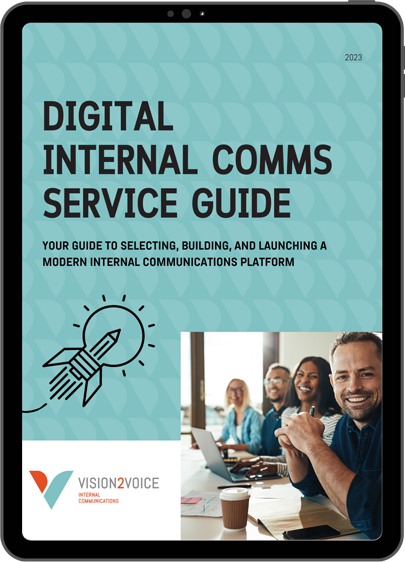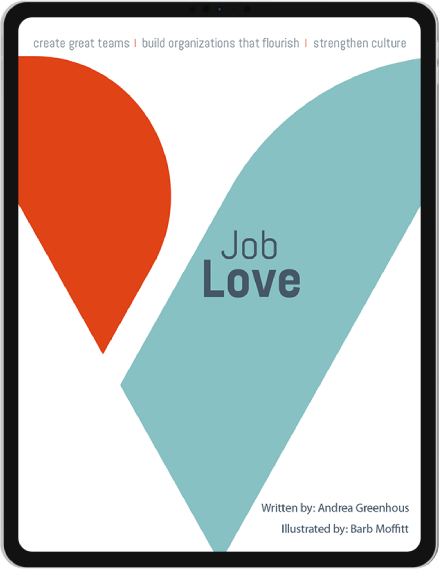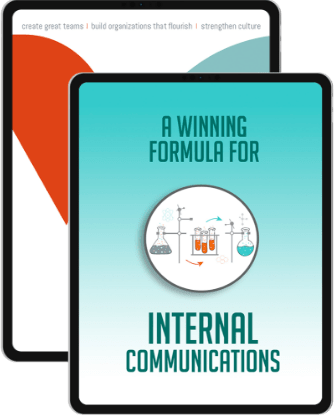Summary: The blog discusses my initial worries about AI in internal communications. It emphasizes using AI as a helpful tool for tasks like writing, organizing, and summarizing, allowing professionals to focus on important work. I suggest a positive and learning-focused approach to AI but stress that it shouldn’t change core communication principles like human-centricity, simplicity, listening, and fostering innovation. The blog warns against ignoring AI’s potential and the importance of staying relevant in a world where AI is becoming more prevalent.
This blog was 100% written without the help of generative AI 😊
I’ve spent my entire career trying to make internal communications more human. That’s why, when the conversation about generative AI started heating up, I became increasingly concerned that we’d turn back the clock on what I viewed as real progress in internal communication. This was confirmed during my early experiments with ChatGPT, which resulted in the same rubbish I’d been fiercely working to eliminate.
The concerns about AI and generative AI are well documented, so I won’t waste your time summarizing what many people are saying. These concerns are fair, but I can’t help but think back to early in my career when people worried about introducing computers in the workplace and, ten years later, had the same concerns about the World Wide Web.
A powerful tool we can’t afford to ignore
Every human advancement will improve and worsen the world – it depends on how we use it. Being the unapologetic optimist I am, I’ll take the optimistic viewpoint. Despite my early reservations, I’ve concluded that AI is a powerful tool and internal communications professionals must understand when, where, and how to use it. We also need to be clear on what shouldn’t change as we adopt new technology that has the potential to help internal comms professionals take their game to the next level.
The real opportunity for AI
Getting to the next level means being more strategic and intentional. It means creating an internal communication ecosystem that supports better outcomes – for businesses and people. One of the most common issues we see in our work with internal communications professionals is that their ability to achieve this is hampered by the volume of work and the demands on their time. If internal comms professionals use AI to help manage their workload and create some breathing room and bandwidth, they can turn their attention to being more strategic.
Here are some of the ways IC pros can use AI:
Get it to do the heavy lifting
If you are like me, you got into the communications business because you love to write. If you’re also like me, you know writing can be some of the most challenging work you’ll ever do. Even famous authors understand that good writing is hard.
“Writing a book is a horrible, exhausting struggle, like a long bout of some kind of painful illness. One would never undertake such a thing if one were not driven on by some demon whom one can neither resist nor understand.” ~George Orwell
Generative AI can help. By now, most of us who have played with ChatGPT (or similar programs) know that it is beneficial at the most challenging part of the writing process – getting started. By giving ChatGPT a few different prompts, you should have some ideas for getting started.
Get it to help with administrative tasks
AI can be used to eliminate or lessen the burden of time-consuming processes. I have a notebook full of notes from the meetings I attend. After the meetings, I check off a few essential action items but often need help to revisit my notes. I’ve been experimenting with Otter.ai I and love the handy summary and its ability to help me quickly identify action items or capture highlights. Similarly, we use the AI assistant in our project management software to automate processes, provide summaries, and support our work. The other day, we even tried to get ChatGPT to estimate the number of pens we had in a bag instead of counting them all — it got very close!
Get it to summarize ideas
While I didn’t use ChatGPT to write this article, I have used it to summarize it. I love how Harvard Business Review created high-level summaries of lengthy articles and thought it would be valuable to implement a similar approach with this blog. With the help of ChatGPT, I made the blog summary. It’s a great way of providing readers with a clear snapshot of the content for those deciding to delve deeper. Leveraging AI for such tasks can optimize communication efforts, ensuring that key messages are captured and delivered efficiently.
Approaching AI with a growth mindset
Staying relevant and adapting in an increasingly complex and fast-changing world requires a growth mindset. Here are some suggestions for applying this mindset to AI.
Explore and learn
Learning takes time and can be challenging, and AI is no different. As someone who likes to move at warp speed, it is hard to slow down to learn something new. But as my running coach told me, you have to go slow to go fast. The potential to save time and use that time to focus on increasing the impact of internal communication in your organization is too significant not to take the time to learn.
Don’t be afraid to experiment (and fail)
Our work as internal comms professionals is highly visible in our organizations, and it can be scary to experiment. Experimentation often can mean failure, which is often viewed as the opposite of success. Be open with your team, internal clients, and leaders and share your desire to experiment with generative AI. Help them understand what is at stake (being left behind) and what that could mean (the potential for missteps) and get buy-in and support for trying something new.
What AI should NOT change
AI isn’t changing everything. It can’t change the tried-and-true principles of effective communication, including the central roles of storytelling, creativity, and emotion. Here are four other things AI shouldn’t change as we use it for internal communication.
Putting humans at the centre: While technology changes rapidly, humans don’t change that fast. We are still primarily driven by an ancient part of our brains – the amygdala. Understanding the human brain and the emotional, physical, and social drivers is critical to modern and meaningful communication.
Less is more: I’m a big fan of the delete button. That’s because excellent communication is always clear and straightforward. Just because we have AI that can generate content for us doesn’t mean we need to write more. We can ask AI to summarize information and use our understanding of employees to clarify meaning.
Listening: Giving employees a voice, harnessing their ideas, and answering their questions is essential to demonstrating trust and respect. Yet, listening is often the forgotten part of the communication equation in our rush to get our message heard. In our rush to use AI, we can’t ignore the role of listening and understanding employees as essential to a healthy internal communication ecosystem.
Innovation: Generative AI develops content based on what the system has already been given. This means that true creativity and innovation are out of its grasp. I believe AI will never replace human ingenuity and creativity. AI can be used to free us of more mundane and straightforward tasks, which frees our brains to rest, roam, and play. My best ideas aren’t generated sitting in front of a computer – they come from riding my bike or being outside. If AI can help me complete my work, I’ll have more time and energy for idea generation.
Don’t be left behind
Generative AI is not going away. A global MIT Technology Review Insights survey found that nearly 90% of global technology leaders already use generative AI (The Globe and Mail). As with computers and the internet a few decades ago, the evolution of AI will take years to play out and will continue to evolve. Our profession needs to take a leadership role and embrace AI by working together to ensure that our strategies remain human-centric, authentic, and transparent in an era increasingly influenced by algorithms. As individuals, we all need to learn how to take advantage of AI – otherwise, we face the risk of being left behind and replaced by someone who is.
Need help getting your comms to the next level with AI? Get in touch today!






